“Una terapia di gruppo”, intervista agli attori Claudio Bisio e Valentina Lodovini
Una Terapia di Gruppo, al cinema dal 21 Novembre, racconta con la commedia, le ossessioni del nostro tempo
Listeners:
Top listeners:
 play_arrow
play_arrow
ENGLISH Channel 01 If English is your language, or a language you understand, THIS IS YOUR CHANNEL !
 play_arrow
play_arrow
ITALIAN Channel 02 Se l’italiano è la tua lingua, o una lingua che conosci, QUESTO È IL TUO CANALE!
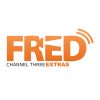 play_arrow
play_arrow
EXTRA Channel 03 FRED Film Radio channel used to broadcast press conferences, seminars, workshops, master classes, etc.
 play_arrow
play_arrow
GERMAN Channel 04 Wenn Ihre Sprache Deutsch ist, oder Sie diese Sprache verstehen, dann ist das IHR KANAL !
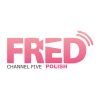 play_arrow
play_arrow
POLISH Channel 05
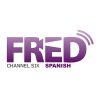 play_arrow
play_arrow
SPANISH Channel 06 Si tu idioma es el español, o es un idioma que conoces, ¡ESTE ES TU CANAL!
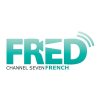 play_arrow
play_arrow
FRENCH Channel 07 Si votre langue maternelle est le français, ou si vous le comprenez, VOICI VOTRE CHAINE !
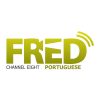 play_arrow
play_arrow
PORTUGUESE Channel 08
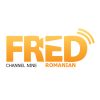 play_arrow
play_arrow
ROMANIAN Channel 09 Dacă vorbiţi sau înţelegeţi limba română, ACESTA ESTE CANALUL DUMNEAVOASTRĂ!
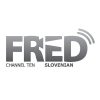 play_arrow
play_arrow
SLOVENIAN Channel 10
 play_arrow
play_arrow
ENTERTAINMENT Channel 11 FRED Film Radio Channel used to broadcast music and live shows from Film Festivals.
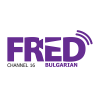 play_arrow
play_arrow
BULGARIAN Channel 16 Ако българският е вашият роден език, или го разбирате, ТОВА Е ВАШИЯТ КАНАЛ !
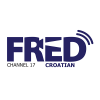 play_arrow
play_arrow
CROATIAN Channel 17 Ako je hrvatski tvoj jezik, ili ga jednostavno razumiješ, OVO JE TVOJ KANAL!
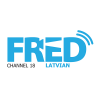 play_arrow
play_arrow
LATVIAN Channel 18
 play_arrow
play_arrow
DANISH Channel 19
 play_arrow
play_arrow
HUNGARIAN Channel 20
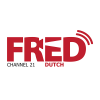 play_arrow
play_arrow
DUTCH Channel 21
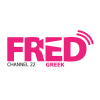 play_arrow
play_arrow
GREEK Channel 22
 play_arrow
play_arrow
CZECH Channel 23
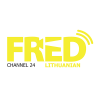 play_arrow
play_arrow
LITHUANIAN Channel 24
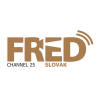 play_arrow
play_arrow
SLOVAK Channel 25
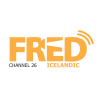 play_arrow
play_arrow
ICELANDIC Channel 26 Ef þú talar, eða skilur íslensku, er ÞETTA RÁSIN ÞÍN !
 play_arrow
play_arrow
INDUSTRY Channel 27 FRED Film Radio channel completely dedicated to industry professionals.
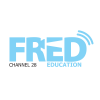 play_arrow
play_arrow
EDUCATION Channel 28 FRED Film Radio channel completely dedicated to film literacy.
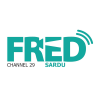 play_arrow
play_arrow
SARDU Channel 29 Si su sardu est sa limba tua, custu est su canale chi ti deghet!
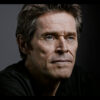 play_arrow
play_arrow
“Conversation with” at the 20th Marrakech IFF, interview with actor Willem Dafoe Bénédicte Prot
Among film genres, the documentary stands apart. In theory, it does not involve the writing of a script in the strictest sense of the word but illustrates a real situation, which unfolds without the intervention of fiction. Since it is not centred on an invented, constructed story, there are no actors playing parts. Rather, it captures life as it unfolds or shows aspects of it that are of particular interest.
Cinema sprang from the need to document reality. The first cinematographic films could be considered true examples of documentary: they are, indeed, known as films of “real life” since they focus attention on episodes of daily life. These are shots of real events, like workers at the gates of a factory in La sortie des usines Lumière (1895, “Workers leaving the Lumière Factory”) by Louis and Auguste Lumière, or shots of nature, as in Rough Sea at Dover (1895) by Birt Acres.
Even if the documentary does not permit the element of fiction, it does nevertheless present a selective, manipulated reality: indeed, the director decides what to shoot and when to start and finish shooting, and therefore favours one portion of reality over another, thereby making a choice.
Based on the various subjects tackled, the documentary has assumed different features and objectives over the years. At the end of the Second World War, it was an invaluable tool to make people aware of the horrors caused by the conflict. In a completely different field, documentaries on nature directed by James Algar and produced by Walt Disney gained popularity from the end of the forties.
In the fifties and sixties, the investigative documentary became established and the political documentary emerged, denouncing injustices in every part of the world and documenting forms of protest: for example, the demonstrations against the Vietnam War. The great documentary makers included Joris Ivens, Chris Marker and Robert Kramer.
From the sixties, the types of documentaries multiplied, due also to the development of sophisticated techniques and lighter equipment, with new trends connected to the personalities and training of the various filmmakers. In parallel with the development of an increasingly complex reality, the documentary produced significant opportunities for analysis and reflection.
Today, the mockumentary has become very successful, a term that combines two words: “mock” and “documentary”. Mock can signify fake but it also means to poke fun at or imitate. In this sense, mockumentaries are not simply fakes, but become important ways of exploring the differences between “facts” and the reconstruction or invention of reality, which, on first sight, appear plausible, not prepared or staged.
The oldest example of this practice is the famous experiment by Orson Welles who, in 1938, presented Herbert George Wells’ The War of the Worlds on the radio and triggered panic along the coast of New Jersey, with two million people fleeing their homes, convinced of the imminent invasion of Martians. The first case on film dates back to 1965 with The War Game by Peter Watkins, which made the possibility of an atomic attack on England and the consequences of nuclear war on the population of Kent plausible and realistic.
The BBC originally produced it for television but then only distributed it in cinemas, due to the difficult nature of the subject matter and the impact of certain sequences.
Producing partner: Aiace Torino http://www.aiacetorino.it/
Voice talents: Dylan Ayres, Sharon Fryer
Music: Bensound – Brazilsamba (Composed and performed by Bensound http://www.bensound.com)
Written by: fredfilmradio
Guest
Film
Festival
No related posts.
Una Terapia di Gruppo, al cinema dal 21 Novembre, racconta con la commedia, le ossessioni del nostro tempo
Todd Haynes, acclaimed filmmaker behind hits like Carol and Far from Heaven, will lead the jury at the 75th Berlinale.
Self, a Pixar Sparkshort title by Searit Huluf, premiering at the Frame Future FF, is literally poetry turned into cinema
Discover “Bogancloch,” the docufilm by Ben Rivers that explores the intricate relationship between isolation and nature, inviting audiences to reflect on the human experience in a profound way.
© 2023 Emerald Clear Ltd - all rights reserved.